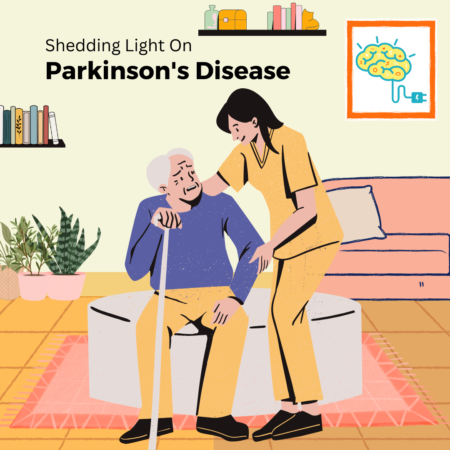 April is National Parkinson’s Awareness Month, a time dedicated to increasing understanding and support for individuals living with Parkinson’s disease and their caregivers. Parkinson’s disease is a progressive neurodegenerative disorder that affects movement, causing symptoms such as tremors, stiffness, slowness of movement, and balance problems. As we honor those affected by Parkinson’s, let’s take a closer look at the disease, its impact on mobility, and explore products designed to assist individuals with movement and mobility challenges.
April is National Parkinson’s Awareness Month, a time dedicated to increasing understanding and support for individuals living with Parkinson’s disease and their caregivers. Parkinson’s disease is a progressive neurodegenerative disorder that affects movement, causing symptoms such as tremors, stiffness, slowness of movement, and balance problems. As we honor those affected by Parkinson’s, let’s take a closer look at the disease, its impact on mobility, and explore products designed to assist individuals with movement and mobility challenges.
Understanding Parkinson’s Disease: Symptoms and Challenges
Parkinson’s disease occurs when there is a loss of dopamine-producing neurons in the brain, leading to disruptions in movement and coordination. While the primary symptoms of Parkinson’s are movement-related, the disease can also cause a range of non-motor symptoms such as cognitive changes, mood disturbances, and sleep problems. Managing Parkinson’s requires a comprehensive approach that may include medication, physical therapy, lifestyle modifications, and assistive devices to address mobility challenges and maintain quality of life.
Products for Improved Mobility and Independence
Living with Parkinson’s disease presents unique challenges, particularly related to movement and mobility. Fortunately, there are products and assistive devices available to help individuals with Parkinson’s navigate their daily lives with greater ease and independence. Here are some products designed to assist with mobility and movement challenges:
- Walking Aids: Walking aids such as canes, walkers, and rollators provide stability and support for individuals with Parkinson’s who may experience balance issues or difficulty walking. Choose a walking aid that suits your needs and preferences, whether it’s a standard cane for occasional support or a rollator with four wheels for added stability and convenience.
- Assistive Devices for Fine Motor Skills: Parkinson’s can affect fine motor skills, making tasks such as writing, eating, and buttoning clothes challenging. Assistive devices such as adaptive utensils, button hooks, and writing aids can help individuals with Parkinson’s maintain independence and perform daily activities more easily.
- Exercise Equipment: Regular exercise is essential for managing Parkinson’s symptoms and maintaining mobility and flexibility. Exercise equipment such as stationary bikes, pedal exercisers, and resistance bands can be used at home or in physical therapy sessions to improve strength, balance, and coordination.
- Mobility Scooters: For individuals with advanced Parkinson’s who have difficulty walking long distances or navigating uneven terrain, mobility scooters offer a convenient and comfortable means of transportation. Choose a scooter with features such as adjustable seats, swivel chairs, and easy-to-use controls for optimal comfort and maneuverability.
- Voice Amplifiers: Parkinson’s can affect speech volume and clarity, making it difficult for individuals to communicate effectively. Voice amplifiers and speech enhancement devices can help individuals with Parkinson’s be heard more clearly, improving communication and social interaction.
National Parkinson’s Awareness Month is an opportunity to raise awareness about Parkinson’s disease and support individuals living with this challenging condition. By educating ourselves about Parkinson’s and exploring available resources and products, we can empower individuals with Parkinson’s to maintain independence, mobility, and quality of life. Whether it’s walking aids, assistive devices, or exercise equipment, these products play a vital role in supporting individuals with Parkinson’s in their daily lives. Let’s continue to advocate for Parkinson’s awareness, research, and support services to improve the lives of those affected by this disease.
